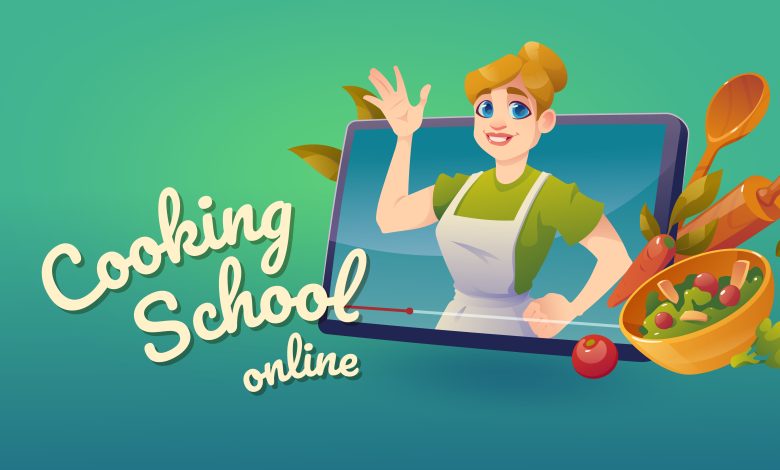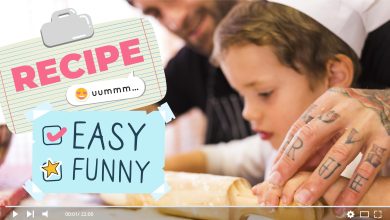How to Offer Online Cooking Classes for Kids

Online cooking classes for kids are a fantastic way to teach essential life skills, inspire creativity, and foster a love for healthy eating—all from the comfort of home. With many parents looking for engaging, educational activities, offering online cooking classes for kids can be a fulfilling and profitable venture. If you’re passionate about cooking and love working with children, this guide will walk you through the steps to create successful, fun, and safe online cooking classes for kids.
1. Define Your Niche and Class Format
Before launching your classes, consider what makes your cooking class unique and appealing. Having a well-defined niche will help you stand out in the growing world of online kids’ classes and attract your ideal audience.
Ideas for Class Niches:
- Healthy Eating: Focus on teaching kids how to make nutritious meals and snacks, covering topics like balanced eating and portion control.
- Cultural Cuisine: Offer classes that explore cuisines from around the world, introducing kids to new flavors and ingredients.
- Baking Basics: Teach baking essentials, from cookies and cupcakes to easy bread recipes. Baking classes are particularly popular with younger children.
- Seasonal and Holiday Cooking: Create themed classes for holidays like Halloween, Christmas, or summer fun with seasonal recipes.
- Cooking for Different Ages: Consider offering classes for specific age groups, like ages 4-7 and 8-12, so you can tailor the difficulty and teaching style.
Defining a niche allows you to attract parents and kids who are interested in a specific type of cooking experience, making it easier to market your classes effectively.
2. Plan Kid-Friendly Recipes and Class Structure
When teaching kids, it’s essential to select recipes that are simple, safe, and fun. Choose recipes with easy-to-follow instructions and minimal cooking time to keep young participants engaged.
Recipe Planning Tips:
- Simple Ingredients: Use common ingredients that families likely already have at home to make participation easy and affordable.
- Short Prep and Cook Times: Choose recipes that can be completed in 30-45 minutes to suit kids’ attention spans.
- Step-by-Step Structure: Break down each recipe into simple, clear steps, making it easy for kids to follow along.
- Safety First: Avoid recipes that require sharp knives or hot surfaces. Focus on activities that are safe and manageable, such as mixing, decorating, or assembling.
Planning recipes that are easy and engaging for kids ensures that everyone can follow along, enjoy the experience, and feel a sense of accomplishment when they complete the dish.
3. Set Up a Safe and Engaging Online Environment
Creating a safe, friendly, and fun online learning environment is crucial when working with kids. Make sure your virtual classroom is inviting and easy to navigate.
Creating a Kid-Friendly Virtual Classroom:
- Choose the Right Platform: Use user-friendly platforms like Zoom, Google Meet, or Microsoft Teams that allow you to share your screen and demonstrate recipes.
- Set Ground Rules: Start each class by explaining basic rules, such as waiting for instructions before using equipment and staying attentive.
- Use Visuals and Props: Show ingredients, utensils, and tools up close to help kids follow along and understand each step.
- Engage with Kids: Use lots of positive reinforcement and ask kids questions to keep them involved and motivated.
- Encourage Parental Supervision: Recommend that parents stay nearby to assist with tasks, ensuring a safe experience for everyone.
Setting up an engaging, safe, and easy-to-navigate online environment will help kids enjoy and feel comfortable during your class.
4. Create a Curriculum and Schedule
Developing a structured curriculum and schedule is essential for planning your classes and keeping parents informed. Decide whether you’ll offer single classes, a series of lessons, or subscription-based programs.
Designing Your Curriculum:
- Single Classes: Offer one-off classes with standalone recipes, which can be great for occasional activities or themed events.
- Class Series: Create a series that covers a theme or skill progression, such as “Beginner Baking” or “Around the World in 5 Dishes.” This allows kids to build skills over time.
- Subscription Model: Provide ongoing classes where families can sign up for a monthly or weekly subscription. This can help you generate consistent income and build a loyal following.
- Set Regular Class Times: Choose class times that are convenient for kids, such as after school or on weekends, and stick to a regular schedule.
A well-structured curriculum helps parents and kids know what to expect, making it easier to build excitement and commitment for your classes.
5. Promote Your Classes to Reach Your Audience
Effective promotion is key to attracting students and growing your online cooking class business. Use a combination of digital marketing strategies to reach parents and showcase the benefits of your classes.
Marketing Strategies for Kids’ Cooking Classes:
- Social Media Marketing: Use platforms like Facebook, Instagram, and Pinterest to share pictures of recipes, testimonials, and behind-the-scenes videos. Create engaging content that appeals to parents and highlights the fun of your classes.
- Collaborate with Parent Bloggers: Reach out to parent bloggers or family influencers who can promote your classes to their audience.
- Build an Email List: Create a simple website with a signup form to collect emails. Send regular newsletters featuring upcoming class schedules, recipes, and promotions.
- Offer Free Trials or Demo Classes: Host a free class or a short demo to give parents a preview of what your classes offer. This helps build trust and can convert viewers into paying customers.
- Get Listed on Kids’ Activity Platforms: Register your classes on websites like KidPass or Outschool, which are designed to help parents find online activities for kids.
Promoting your classes effectively will help you build an audience, attract sign-ups, and establish a successful online cooking class business.
6. Gather Feedback and Continuously Improve
Feedback is essential for ensuring your classes meet kids’ needs and keep parents happy. Ask for feedback regularly and use it to make adjustments.
Ways to Collect and Use Feedback:
- Parent Surveys: After each class or at the end of a series, ask parents to complete a quick survey to gauge their child’s enjoyment and engagement.
- Direct Questions: During classes, ask kids what they enjoyed and encourage them to share their favorite parts of the lesson.
- Social Media and Reviews: Monitor comments and reviews on social media to see what parents are saying about your classes.
- Update Based on Feedback: Use feedback to improve your recipes, adjust the pace of instruction, or change the class format as needed.
By actively seeking feedback, you can keep your classes relevant, enjoyable, and aligned with both kids’ and parents’ expectations.
7. Monetize Your Classes Effectively
Once your classes are up and running, think about ways to monetize your offerings and make your online cooking class business sustainable.
Monetization Strategies:
- Class Fees: Charge a fee for each class or offer discounted rates for families who sign up for a series.
- Monthly Subscriptions: Offer a subscription-based model where families pay a monthly fee for access to multiple classes.
- Recipe Kits: Sell recipe kits with pre-measured ingredients that families can purchase and use during your class.
- Affiliate Links: Partner with brands for affiliate links on kitchen tools and ingredients. Share these with parents so they can purchase recommended items.
- Digital Cookbooks or Course Materials: Create and sell digital cookbooks, printables, or video recordings of past classes.
Having multiple revenue streams can make your cooking class business more profitable and provide parents with added value.
Conclusion
Offering online cooking classes for kids is a rewarding way to share your passion for cooking, teach valuable skills, and create engaging learning experiences. By defining your niche, planning kid-friendly recipes, creating a safe and engaging virtual environment, and promoting your classes effectively, you can build a successful online cooking class business. With dedication, creativity, and a focus on delivering fun, hands-on learning, your classes can inspire the next generation of chefs while allowing you to turn your culinary skills into a sustainable venture. Embrace the journey, and enjoy the rewards of teaching kids the joy of cooking!





